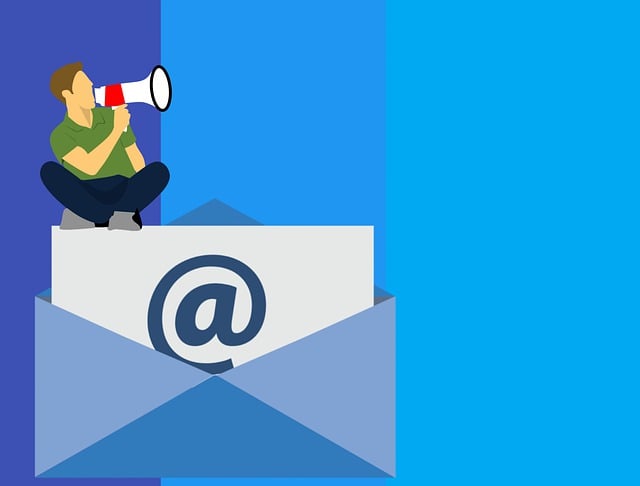Are you struggling to decide between email marketing and influencer marketing for your fashion and beauty brand?nnIt’s like choosing between a classic little black dress and a trendy statement piece – both have their merits, but which one is the true showstopper?nnIn this article, we will dive into the world of email marketing and influencer marketing, exploring their unique strengths and how they can elevate your brand.nnWe’ll compare the benefits of each strategy, from reaching a targeted audience to creating authentic connections.nnAnd, just like mixing and matching different fashion pieces, we’ll show you how to integrate these two powerful marketing techniques for maximum impact.nnGet ready to learn from successful case studies and discover the right strategy that will make your fashion and beauty brand shine.nnLet’s find out which marketing avenue steals the spotlight!
Key Takeaways
- Email marketing and influencer marketing both have their advantages and can be effective strategies for fashion and beauty brands.
- Email marketing allows for personalized content, detailed analytics, and long-term brand building and customer retention.
- Influencer marketing offers authenticity, reach, and collaborations, and can tap into the influencer’s loyal fan base.
- Integrating email and influencer marketing can maximize brand impact, provide insights into collaborations, and inspire audience to make a purchase.
Understanding Email Marketing for Fashion and Beauty Brands
Email marketing is crucial for fashion and beauty brands to effectively reach and engage with their target audience. In today’s digital age, email remains one of the most powerful and cost-effective marketing channels.
To stay ahead of the competition, fashion and beauty brands must stay updated on the latest email marketing trends and strategies. Personalization is key, as customers expect tailored content that resonates with their specific interests and preferences. Segmenting your email list based on demographics, purchase history, and engagement levels can greatly enhance the effectiveness of your campaigns.
Additionally, incorporating visually appealing designs and compelling subject lines will increase open rates and click-through rates. By leveraging the power of email marketing, fashion and beauty brands can establish strong relationships with their customers and drive sales.
Now, let’s explore the power of influencer marketing in the fashion and beauty industry.
The Power of Influencer Marketing in the Fashion and Beauty Industry
Influencer marketing has revolutionized the fashion and beauty industry with its undeniable power. It has become one of the most effective strategies for brands to reach their target audience and boost sales.
Here are three sub-lists that highlight the effectiveness and trends of influencer marketing in the fashion and beauty industry:
-
Authenticity: Influencers have a unique ability to connect with their followers on a personal level, making their recommendations and endorsements more genuine and trustworthy.
-
Reach and Engagement: Influencers have a large and dedicated following, which means that their posts have the potential to reach a vast audience. Moreover, followers tend to engage more with influencer content, resulting in higher conversion rates.
-
Influencer Collaborations: Brands are increasingly partnering with influencers to create co-branded products, collections, or exclusive collaborations. This helps brands tap into the influencer’s loyal fan base and leverage their influence to drive sales.
With influencer marketing being such a powerful tool, it’s important to compare its benefits with email marketing to determine which strategy works best for fashion and beauty brands.
Comparing the Benefits of Email Marketing and Influencer Marketing
When it comes to reaching and targeting your audience, influencer marketing allows you to tap into the followers of influencers who align with your brand. This ensures that your message reaches the right people who are more likely to engage with your fashion or beauty products.
Additionally, influencer marketing can be more cost-effective than email marketing, as it allows for more organic and authentic promotion of your brand.
Lastly, influencer marketing has the power to build long-term brand loyalty and recognition through the continuous association with trusted influencers, creating a lasting impact on your target audience.
Reach and Targeting
To effectively reach and target your ideal audience in the fashion and beauty industry, you need to carefully consider the various channels available. These channels include email marketing and influencer marketing.
When it comes to improving engagement, both email marketing and influencer marketing have their strengths. With email marketing, you have the ability to send personalized messages to your subscribers. This personalization can result in higher open and click-through rates.
On the other hand, influencer marketing allows you to leverage the trust and authority of influencers to promote your brand. This can lead to increased engagement and brand loyalty.
To measure the success of your campaigns, you can track metrics like email open rates, click-through rates, and conversion rates for email marketing. For influencer marketing, you can measure metrics like follower growth, engagement rate, and sales attributed to influencers.
By carefully analyzing these metrics, you can optimize your campaigns and ensure you are effectively reaching and targeting your ideal audience.
Moving on to cost-effectiveness…
Cost-effectiveness
In the quest for cost-effective advertising strategies in the ever-evolving world of fashion and beauty, businesses must explore innovative channels that yield maximum returns on investment. When comparing email marketing and influencer marketing, cost effectiveness plays a crucial role in decision-making.
Here are three reasons why email marketing proves to be a more cost-effective option:
-
Low Cost: Email marketing campaigns require minimal investment compared to influencer marketing, which often involves hefty fees for collaborating with popular influencers.
-
Higher Conversion Rates: With personalized and targeted emails, businesses can achieve higher conversion rates, resulting in a better return on investment.
-
Easy Tracking: Email marketing platforms provide detailed analytics, allowing businesses to measure the success of their campaigns and make necessary adjustments for improved cost effectiveness.
Considering these factors, email marketing emerges as the more cost-effective choice for fashion and beauty brands.
Transitioning into the subsequent section about ‘long-term brand building,’ it is important to understand the impact of sustained marketing efforts beyond immediate returns.
Long-term Brand Building
Establishing a strong and enduring brand presence is crucial for fashion and beauty businesses looking to thrive in the long run. Long-term brand building is not just about attracting new customers, but also about fostering long-term brand loyalty and customer retention.
While both email marketing and influencer marketing can contribute to brand building, email marketing has a unique advantage when it comes to cultivating long-term relationships with customers. By consistently delivering personalized and relevant content, email marketing helps to keep your brand top of mind and encourages repeat purchases. It allows you to nurture a loyal customer base and build trust over time.
In contrast, influencer marketing can be more focused on short-term gains and may not have the same impact on long-term brand loyalty and customer retention.
As we move into the next section on integrating email and influencer marketing strategies, let’s explore how these two approaches can work together to maximize your brand’s impact.
Integrating Email and Influencer Marketing Strategies
When it comes to integrating email and influencer marketing strategies, collaborating with influencers on email campaigns can significantly boost your brand’s reach and engagement.
By partnering with influencers, you can leverage their expertise and following to create compelling content for your email campaigns.
Additionally, utilizing email marketing to support influencer partnerships can help drive traffic to their channels and ultimately increase their influence and visibility.
Lastly, leveraging influencer content for email campaigns allows you to repurpose their authentic and engaging content, ensuring that your emails resonate with your audience and drive conversions.
Collaborating with Influencers on Email Campaigns
To maximize the impact of your email campaigns, consider collaborating with influencers who have a substantial following in the fashion and beauty industry. Did you know that 80% of consumers are more likely to purchase a product recommended by an influencer they follow? By partnering with influencers, you can tap into their loyal audience and increase the visibility of your brand.
When collaborating, it’s important to define clear goals and expectations for the campaign, such as the number of posts, reach, and engagement. Additionally, ensure that the influencer’s values align with your brand to maintain authenticity.
To measure the success of your influencer campaign, track key metrics like click-through rates, conversions, and engagement on your email campaigns. This data will provide insights into the effectiveness of your collaborations and help you make informed decisions for future partnerships.
Transitioning into the next section, let’s explore how you can utilize email marketing to support your influencer partnerships.
Utilizing Email Marketing to Support Influencer Partnerships
Make the most of your influencer partnerships by incorporating email campaigns that complement their content and provide valuable information to your audience. Integrating influencer partnerships with email marketing can be a powerful strategy for fashion and beauty brands.
By sending out targeted emails that feature the influencer’s content, you can reach a wider audience and increase brand awareness. Additionally, email marketing allows you to provide more in-depth information about your products or services, which can help drive conversions.
To measure the success of your campaign, track metrics such as open rates, click-through rates, and conversions. This data will give you insights into how well your email campaigns are performing and allow you to make adjustments as needed.
By leveraging influencer content for email campaigns, you can create a cohesive marketing strategy that maximizes the impact of both channels.
Transitioning into the next section, let’s explore how to leverage influencer content for email campaigns.
Leveraging Influencer Content for Email Campaigns
Incorporating influencer content into your email campaigns can create a seamless and impactful marketing strategy. By leveraging influencer partnerships, you can maximize your email reach and connect with a wider audience.
Including influencer-generated content in your emails adds authenticity and credibility to your brand, as well as capturing the attention of your subscribers. Whether it’s featuring influencer reviews, tutorials, or showcasing them wearing your fashion or beauty products, this content can inspire and influence your audience to make a purchase.
Additionally, including links to the influencers’ social media profiles encourages subscribers to engage with them further. By leveraging influencer content in your email campaigns, you can create a cohesive and persuasive marketing approach that drives results.
Transitioning to the subsequent section about ‘case studies: successful email and influencer marketing campaigns in fashion and beauty’, let’s explore real-life examples that demonstrate the power of this combined strategy.
Case Studies: Successful Email and Influencer Marketing Campaigns in Fashion and Beauty
Discover the groundbreaking success stories of email and influencer marketing campaigns in the fashion and beauty industry as they paint a vivid picture of the transformative power these strategies possess.
Successful email case studies have shown that personalized and targeted email campaigns can significantly boost engagement and conversion rates. Brands like Sephora and Glossier have leveraged their email lists to provide exclusive offers, sneak peeks, and personalized recommendations, resulting in increased sales and brand loyalty.
On the other hand, effective influencer campaigns have proven to be influential in driving brand awareness and reaching a wider audience. Brands like Revolve and Fashion Nova have collaborated with popular fashion influencers, leading to viral content, increased social media following, and ultimately, higher sales.
Both strategies have their merits, but choosing the right strategy for your fashion and beauty brand depends on your specific goals and target audience.
Choosing the Right Strategy for Your Fashion and Beauty Brand
When it comes to choosing the right strategy for your fashion and beauty brand, there are three key points to consider.
First, you need to assess your goals and target audience to determine which approach will resonate best with them.
Second, budget considerations play a crucial role in deciding between email marketing and influencer marketing.
Finally, testing and optimization are essential to ensure that your chosen strategy is effective and yielding the desired results.
Assessing Your Goals and Target Audience
To truly understand which marketing strategy is best for your fashion and beauty brand, you need to assess your goals and target audience. Knowing who you’re trying to reach and what you want to achieve will help you make an informed decision. Here are three key factors to consider:
-
Understand your target demographics: Take the time to research and analyze the demographics of your ideal customer. This will help you tailor your marketing efforts and ensure that you’re reaching the right audience.
-
Measure campaign effectiveness: Set clear goals for your marketing campaigns and track their performance. Use analytics tools to measure key metrics such as click-through rates, conversion rates, and customer engagement. This data will provide valuable insights into the effectiveness of each strategy.
-
Consider customer preferences: Consider how your target audience prefers to receive information. Do they prefer email newsletters or do they follow influencers on social media? Understanding their preferences will help you choose the strategy that’ll resonate most with them.
By assessing your goals and target audience, you can make an informed decision about which marketing strategy will work best for your fashion and beauty brand. As you consider your budget considerations, it’s important to keep these factors in mind.
Budget Considerations
Now that you have assessed your goals and target audience, it’s time to dive into budget considerations for your fashion and beauty marketing strategy. When it comes to email marketing and influencer marketing, understanding the cost implications is crucial. Let’s compare the two approaches side by side to help you make an informed decision.
| Email Marketing | Influencer Marketing |
| :—: | :—: |
| Lower upfront costs | Higher upfront costs |
| Wide reach potential | Targeted reach potential |
| Trackable metrics | Harder to measure ROI |
Email marketing typically requires lower upfront costs and offers a wide reach potential to your target audience. On the other hand, influencer marketing may have higher upfront costs but provides a more targeted reach potential. However, it can be challenging to measure the return on investment (ROI) accurately.
Considering your budget and goals, carefully analyze the cost considerations and conduct an ROI analysis to determine which approach aligns better with your objectives. Once you have made your choice, it’s time to move on to the next step: testing and optimization.
Testing and Optimization
Maximizing your strategy’s potential through testing and optimization is the key to unlocking your fashion and beauty marketing success. When it comes to email marketing and influencer marketing, testing strategies and optimization techniques are crucial for achieving the best results.
In email marketing, you can test different subject lines, email designs, and call-to-action buttons to see what resonates best with your audience. By analyzing open rates, click-through rates, and conversions, you can optimize your emails to drive maximum engagement and sales.
On the other hand, influencer marketing requires testing and optimizing your collaborations with influencers. Experiment with different influencers, content formats, and messaging to determine what generates the most impact. Continuously analyze engagement metrics and conversion rates to refine your approach and ensure your influencer partnerships are driving the desired outcomes.
By constantly testing and optimizing your strategies, you can stay ahead in the competitive fashion and beauty industry and achieve the best possible results from both email marketing and influencer marketing.
Frequently Asked Questions
How much does it cost to implement an email marketing strategy for a fashion and beauty brand?
Looking to implement an email marketing strategy for your fashion and beauty brand? Wondering about the cost comparison?
Well, the good news is that email marketing can be cost-effective compared to other marketing strategies. With the right tools and platforms, you can reach a wide audience at a relatively low cost. Plus, measuring the return on investment (ROI) is easier with email marketing, allowing you to track the success of your campaigns and make data-driven decisions.
So, why not give it a try?
Can influencer marketing be effective for small fashion and beauty brands with limited budgets?
Influencer marketing can be highly effective for small fashion and beauty brands with limited budgets. By partnering with relevant influencers who have a loyal following, you can reach a targeted audience without breaking the bank.
To maximize ROI in influencer marketing, focus on finding micro-influencers with engaged audiences and negotiate cost-effective partnerships. Additionally, track and analyze campaign metrics to ensure you’re getting the most out of your budget.
Are there any legal considerations or guidelines to keep in mind when using email marketing for fashion and beauty brands?
When using email marketing for fashion and beauty brands, it’s important to be aware of legal considerations and guidelines.
One key consideration is GDPR compliance, which means you must obtain explicit consent from individuals before sending them marketing emails.
Additionally, you should provide clear instructions on how recipients can unsubscribe from your emails.
Following these guidelines not only ensures legal compliance but also helps build trust with your audience.
Email marketing remains an effective strategy for reaching and engaging with your target market.
How do you measure the success of an influencer marketing campaign in the fashion and beauty industry?
To measure the success of an influencer marketing campaign in the fashion and beauty industry, you need to focus on two key aspects: measuring ROI and tracking engagement.
By analyzing the return on investment, you can determine if the campaign generated the desired financial outcomes. Additionally, tracking engagement metrics such as likes, comments, shares, and click-through rates can indicate the level of audience interest and involvement.
These measurements will help you assess the effectiveness and impact of your influencer marketing efforts.
What are some common challenges or pitfalls to avoid when integrating email and influencer marketing strategies for fashion and beauty brands?
When integrating email and influencer marketing strategies for fashion and beauty brands, there are several challenges and pitfalls to avoid. One common challenge is ensuring that the email and influencer campaigns align with each other and the brand’s overall message.
It’s also important to find the right influencers who resonate with your target audience and have a genuine interest in your products.
Additionally, managing and coordinating multiple campaigns can be time-consuming, so it’s crucial to have a well-organized system in place.
Conclusion
In conclusion, both email marketing and influencer marketing have proven to be effective strategies for fashion and beauty brands.
While email marketing allows for direct communication with customers and offers a personal touch, influencer marketing leverages the power of social media and the influence of popular personalities.
To maximize success, it’s recommended to integrate both strategies and tailor them to your brand’s specific goals and target audience.
By combining the two, you can create a comprehensive marketing approach that reaches a wider audience and drives engagement.
So, don’t limit yourself to just one strategy, explore the possibilities and find the right mix for your fashion and beauty brand.









